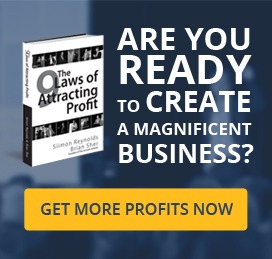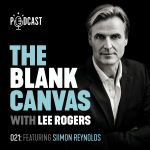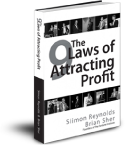
Other wealthy countries may envy our growth, but economists see danger signs looming on the horizon.
TO UNDERSTAND the stark differences between Australia and most other rich countries, look no further than the cheesy metaphors economists are so fond of.
After a run of blistering growth coupled with tame inflation, ours has been dubbed the “Goldilocks” economy – not too hot, not too cold, just right. Commonwealth Bank analysts were more dramatic: “Tsunami of export gold breaking over economy!” one note blared this week.
Overseas, however, the rhetoric is decidedly glum.
Former prime minister Gordon Brown earlier this year likened Britain’s economy to an injured footballer, Wayne Rooney. Both needed support to recover for the World Cup – but the comparison did little for England’s economic or sporting fortunes.
Europe’s debt woes are only the ”canary in the coal mine,” a senior European Central Bank official has conceded, as more governments expect to face a budget squeeze.
And US investors are hoping for another rescue from “Helicopter Ben”, as Federal Reserve chairman Ben Bernanke is known. He earned the nickname after invoking an old idea from economist Milton Friedman that central banks should boost spending by dropping cash from choppers if deflation gets bad enough. The Fed has virtually done this by buying US government bonds to pump up liquidity in the financial markets, and some suspect it may soon be forced give the money supply another boost.
You get the picture. Our economy is in another league from most of the developed world, a fact confirmed by this week’s bumper June quarter growth rate of 1.2 per cent.
Treasurer Wayne Swan, didn’t let the opportunity slip to take some credit. “Finance ministers else- where and prime ministers elsewhere would kill for a set of outcomes such as these,” he said. ”This is an endorsement of what we’ve done to support the economy.”
But beyond the strong growth figures, just how rosy is the national economic outlook compared with other developed countries? Are we hitching the bandwagon too closely to China’s growth? And what other risks may lie ahead for the ”miracle economy” down under?
While most wealthy countries still look shaky, Australia now appears close to its pre-crisis health. The chances of finding a job are far better here than overseas, and things are looking more rosy for business, too.
The 3.3 per cent growth rate for 2009-10 took the economy back to its long-term average, even though government spending is still playing a role. But what really got the markets excited last week was household spending’s strong showing and the resources industry, where profits were up almost two-thirds in just three months.
As Nomura chief economist Stephen Roberts points out, this strength means Australia will sprint ahead of our developed-world peers over the next few years.
According to Nomura forecasts, Australia will grow by at least 3 per cent in the calendar year, accelerating to 3.3 per cent in 2011 and 3.6 per cent in 2012. This is double what is expected in the euro area, forecast to expand by a sluggish 1.5 per cent this year, barely lifting in the two years after that.
The US outlook has also become increasingly grim. David Rosenberg, a bearish analyst who used to be chief economist at Merrill Lynch, argues the US is already in a 1930s-style depression, similar to Japan’s battle with deflation. A slew of investment banks, including Goldman Sachs and JPMorgan, have slashed their US growth estimates to anaemic European levels.
Growth isn’t everything, of course. But the steady expansion in our economy has certainly avoided some of the social pain seen overseas. This is most evident in what many see as the most important goal for a government – ensuring there are enough jobs.
At 5.3 per cent, the unemployment rate means we are nearing what economists call “full employment”. This confusing label simply means that if unemployment gets much lower, inflation will start rearing its head as wage pressures rise.
It’s a prospect governments in the US and Europe would die for. Unemployment is near 10 per cent on both sides of the Atlantic, and their sluggish recoveries mean it is unlikely to fall in the near future. Britain is only slightly better, at 7.8 per cent, after posting the biggest fall in three years last month.
Our strong jobs performance is rippling across the consumer economy, because it gives shoppers the confidence to go out and spend, a point reinforced by figures last week showing household spending up a surprising 1.6 per cent in June.
Wesfarmers managing director Richard Goyder has detected a similar trend among customers at the conglomerate’s big retailers, Coles, Target and Bunnings.
”We think consumers are probably in a better position now than they’ve been for a while. They’ve saved money and are working longer hours, employment’s still strong,” he said. ”But we think they’re being pretty cautious about their spending habits and they are definitely shopping for value at the moment.”
In contrast, no amount of interest rate cuts or discounting seems able to encourage spending from cautious households in the US and Japan.
Yet even if Australian households were spooked into spending less, analysts expect momentum in years ahead to continue thanks to a powerful surge in mining-related investment from business.
According to RBC Capital Markets, about $84 billion worth of resource projects are under way in Queensland and Western Australia, and those worth a further $69 billion are under consideration. Even if some of these fall over, the massive capital spending that has already been committed will flow into wages and other businesses for at least a few years.
Nomura’s Stephen Roberts points out that this would create a buffer in the event of the much-feared ”double dip”, softening the blow if things slow down.
”We have some almost hard-wired spending in the private sector, and that’s going to be there in 2011 and 2012,” he says. ”This almost certain spending means that we may soften, but it’s going to be a lot more protracted than it would have been in the past.”
In a further boost for exporters, farmers are also finally enjoying good times with booming crop prices after the end of drought. The value of agricultural exports has risen steadily from late last year, and is nearing pre-crisis levels.
All up, the mountain of mining spending, helped by stronger signs in farming and consumer sectors, points to a sturdy, broad recovery.
RBS chief economist Kieran Davies says a slew of figures on strong company profits and household spending last week show there is more than just mining to the nation’s prosperity.
”The problem was that people were focusing too much on things like retail sales and housing finance. GDP gives a much broader picture of the economy and it shows households coming back,” he says. ”Even with business investment, mining is the strongest but there’s an improving outlook for other industries.”
Despite all this, the outlook is hardly risk-free.
Fears of a slowdown in the world economy loom large – and a slump in China would probably hurt Australia more than any other wealthy country. The strength of domestic expansion could also be its own worst enemy, as the economy starts to bump up against its limits.
Asked what he sees as the biggest risks, Grattan Institute economist Saul Eslake quickly nominates an abrupt fall in commodity prices. Coal and iron ore prices might seem distant concerns, but he says a sharp fall would jar the sharemarket and Australian dollar, both of which could then affect consumer confidence.
”It would have an impact on the sharemarket, and that, in turn, would affect people’s super portfolios,” says Eslake, the former chief economist at ANZ.
Another freezing over in the credit markets could also derail the recovery, but he sees a ”double dip” in the US as less of a worry.
RBS’s Davies plays down the importance of the world’s largest economy to Australia’s prosperity. ”China is the biggest driver of what happens here, but markets at the moment are more concerned with the US,” he says.
Indeed, figures last week showed we ran a record $11.1 billion trade surplus with China in the past year, up from virtually zero a year earlier.
So are we putting too many eggs in the China basket?
”Not necessarily,” Eslake says, ”although I think there are risks to other industries if the mining boom persists for a long time and keeps the exchange rate at an elevated level for a long time.” Other export industries such as agriculture, education, tourism and manufacturing could be harmed by the higher dollar, which cuts the value of foreign currency income.
But Eslake concedes we would be hurt most if China fell in a heap.
”We are probably at risk more than any other Western economy if China were to slow down a lot,” he says. ”On the other hand, what should we do about that? Should we not sell as much to the Chinese as they want to buy from us?”
In short, economists are loath to see dependence on China as too big a risk since that might mean cutting back on mining-led growth.
Instead, they say the rest of the economy must adjust to an environment of ”full capacity” – where labour and other resources are increasingly scarce. This is yet another feature of the boom that sets Australia apart from other countries where out-of-work job-seeker numbers are much larger.
Unfortunately, operating near capacity also means higher interest rates. In a speech in May, Reserve Bank deputy governor Ric Battellino said mining booms had nearly always been times of ”inflationary pressure” – that is a time of higher interest rates. Although rates have been on hold since May, most RBA watchers predict they have further to rise in the year ahead.
Analysts say this period of higher interest rates is a necessary price to pay for the stronger growth across the country.
But for the vast swaths of population not feeling the direct benefits of the mining boom, it could be an unpleasant cost to bear.
Best Business Coaching – The Fortune Institute














